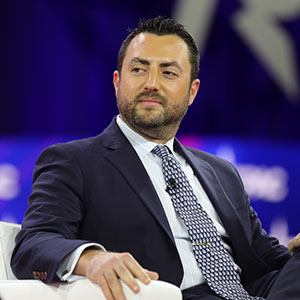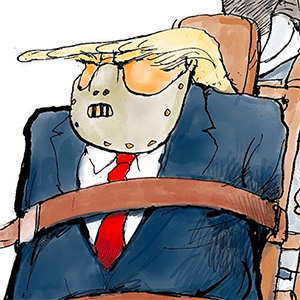Trump and Harris Should Debate the 2024 Quemoy and Matsu Crisis (JFK and Nixon Did in 1960)
As I write this column, the Pentagon says the U.S. has no deployed aircraft carriers -- zero -- in the western Pacific Ocean. Two Pacific carriers have moved to the Middle East. The other carriers "in the region" are in U.S. West Coast ports -- not deployed at sea. Naval News reported Aug. 25 the carrier "gap" will continue for three weeks in the western Pacific "where standoffs and incidents are common."
"Incident" and "standoff" are anodyne words for Communist Chinese (People's Republic of China) warships and aircraft violating Filipino, Japanese and Taiwanese air and sea space. Naval News adds: "Between the Middle East, maintenance periods, and the Indo-Pacific, the US Navy's carrier fleet is stretched thin trying to uphold a high-demand presence worldwide."
That is a strategic fact and a genuine danger that requires presidential and Pentagon attention.
Which makes a new analysis by the Institute for the Study of War and the American Enterprise Institute particularly relevant. Published Aug. 24, the document's title sketches the argument: "Exploring a PRC Short-of-War Coercion Campaign to Seize Taiwan's Kinmen Islands and Possible Responses."
Here's my condensed geography primer. During the two 1950s Taiwan Straits crises, Kinmen was better known as Quemoy, a rock island Chiang Kai-shek's Republic of China nationalist soldiers denied Mao Zedong's Communist Chinese in 1949. In 2002, I visited Kinmen. Despite peace, it felt very frontline. Through an unoccupied bunker's observation slit, I saw the PRC's Fujian shoreline perhaps two miles away. West and distant: the mainland port city of Xiamen. Taiwan? The island was 100 miles east, 50 minutes by air to Taipei.
Major points in the ISW-AEI study's "Key Takeaways" summary:
The PRC "began aggressively challenging Taiwan's jurisdiction over its outlying islands, especially Kinmen, in February 2024. Repeated ... incursions in Taiwan-controlled waters around Kinmen aim to normalize the PRC's 'law enforcement' jurisdiction in the area," with the goal of eroding Taiwan's sovereignty of the islands.
The authors believe Beijing could "quarantine" Kinmen by denying "Taiwanese government ships (access)" -- thus economically squeezing Kinmen and its surrounding islets. "The PRC can enhance Kinmen's isolation by imposing a no-fly zone and sabotaging communication infrastructure, before finally coercing Kinmen to demilitarize under PRC oversight."
Later in the study: "A similar series of events around Taiwan's Matsu Islands could lead to the PRC capturing those islands ..."
Beijing's time frame is right now.
Why? Perhaps the biggest factor: "US unpreparedness or unwillingness to intervene amid domestic and international distractions increases the likelihood of this scenario."
My read on domestic distractions: a presidential election while a deposed and senile president nominally occupies the office. The authors think Beijing is prepared to take advantage of what I've called "the Biden Moment" -- weak U.S. strategic leadership with the Afghanistan withdrawal debacle as Exhibit 1.
Page 17 of the study supports my read: "The crisis around Kinmen coincides with President Joe Biden's 'lame duck' period ... aftermath of a contentious presidential election, and costly wars in Ukraine and the Middle East that occupy US attention and resources."
That's why I began this column with the aircraft carrier gap -- it's happening now and exemplifies resources stretched to the max.
Another PRC call to action: "Trends in Taiwan's domestic politics that diminish the PRC's confidence in its ability to achieve 'peaceful reunification' also contribute to the likelihood of such a coercion campaign."
The trends: Taiwan's president and ruling party reject PRC control. They won an election in January 2024. The Kinmen coercion operation began in February.
Hence the dangerous moment. The PRC conducts this "short-of-war coercion campaign" and gains de facto control of the Kinmen archipelago. The big payoff for the PRC: the operation shows Taiwan that the feckless U.S. won't go to war to defend Taiwanese sovereignty.
One final historical note. Defending Quemoy (Kinmen) and Matsu were contentious subjects in the October 1960 presidential debates between John F. Kennedy and Richard Nixon.
If they have a real debate, a debate on vital issues (not vibes), former President Donald Trump and Vice President Kamala Harris should debate the islands' defense in September 2024.
========
To find out more about Austin Bay and read features by other Creators writers and cartoonists, visit the Creators Syndicate webpage at www.creators.com.
----
Copyright 2024 Creators Syndicate, Inc.





































Comments